Michael J. Behe's Blog, page 529
February 4, 2019
Suzan Mazur’s new book details how mechanobiology Dooms Darwin
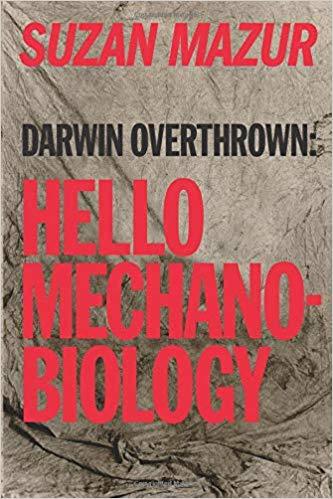
From Amazon:
Darwin Overthrown: Hello Mechanobiology showcases the new evolutionary science at the crossroads of biology and engineering and feature interviews with the world’s key scientists investigating how physical forces and mechanics shape life.
Mechanobiology? “More than a century ago, it was proposed that mechanical forces could drive tissue formation. However, only recently with the advent of enabling biophysical and molecular technologies are we beginning to understand how individual cells transduce mechanical force into biochemical signals. In turn, this knowledge of mechanotransduction at the cellular level is beginning to clarify the role of mechanics in patterning processes during embryonic development. In this perspective, we will discuss current mechanotransduction paradigms, along with the technologies that have shaped the field of mechanobiology.” – A Hitchhiker’s Guide to mechanobiology (open access)
Suzan Mazur has made a career of covering the gradual way in which Darwinism is being replaced in biology—whether anyone admits it or not—by other ways of looking at the journey of life through time. Her blog is Oscillations. Her other books include
The Altenberg 16: An exposé of the evolution industry (2010)
The Origin of Life Circus (2014)
The Paradigm Shifters: Overthrowing ‘the Hegemony of the Culture of Darwin’ (2015)
and
Royal Society: Public Evolution Summit (2016)
See also: Suzan Mazur On Mechanobiology, The Next Level Of Understanding Of The Cell
Follow UD News at Twitter!
Copyright © 2019 Uncommon Descent . This Feed is for personal non-commercial use only. If you are not reading this material in your news aggregator, the site you are looking at is guilty of copyright infringement UNLESS EXPLICIT PERMISSION OTHERWISE HAS BEEN GIVEN. Please contact legal@uncommondescent.com so we can take legal action immediately.Plugin by Taragana
Was Killing Babies Good?
I have a question for our materialist interlocutors. As Georgi Boorman summarizes in this article, in many ancient cultures killing certain babies was an acceptable, even lauded, practice. Here’s my question: You say that morality is a social construct; which means that “good” means what the people of a society collectively deem to be good. If that is so, was it an affirmatively good thing when an ancient pagan killed a baby girl because she was a baby girl instead of a baby boy?
Copyright © 2019 Uncommon Descent . This Feed is for personal non-commercial use only. If you are not reading this material in your news aggregator, the site you are looking at is guilty of copyright infringement UNLESS EXPLICIT PERMISSION OTHERWISE HAS BEEN GIVEN. Please contact legal@uncommondescent.com so we can take legal action immediately.
Plugin by Taragana
The “dumb Neanderthal” myth dies hard
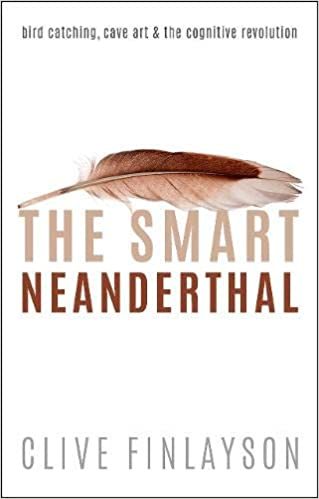
A lot depends on the myth. From a review of Clive Finlayson’s forthcoming The Smart Neanderthal: Bird Catching, Cave Art, and the Cognitive Revolution:
Finlayson, director of the Gibraltar Museum since 1991, takes aim at researchers who have interpreted the archaeological record of Neanderthals as suggesting that the species never attained the brain power of contemporary Homo sapiens. Sure, Neanderthals get marks for surviving at a time when the cold climate brought tundra conditions to most of Europe. But the conventional wisdom is that the modern humans who moved into Europe soon after leaving Africa some time in the past 50,000 to 70,000 years had already raised their cognitive game a notch or two, thus enabling them to prosper and eventually outwit their Neanderthal cousins.
Gibraltar lies at the southwestern edge of Neanderthals’ geographical range. Finlayson argues that discoveries his team has made at four main cave sites suggest that the species’ behavioural repertoire was more sophisticated than the popular caricature suggests. He says that the Neanderthals living there had access to, and took advantage of, a much wider range of resources than their northerly cousins, including rich avian biodiversity. And he posits that an archaeologist not familiar with animal behaviour would be unable to decipher the Gibraltar Neanderthals’ cognitive parity with modern humans. Bernard Wood, “Trail of feathers to the Neanderthal mind” at Nature
The reviewer isn’t convinced. Anyway, Finlayson’s gotta be put down for titling his book “The Smart Neanderthal,” in defiance of the Narrative in human paleontology. Who’s this Finlayson anyway, to question the boffins? More stories to come, for sure.
Prediction: Neanderthals will suddenly become just like us if a different set of putative “less than human” bones turns up. So long as there is no other “not quite human” in easy view, it really doesn’t matter what Neanderthals actually did. They’ll still have to be cast that way to appear in the approved drama of human evolution.
See also: Neanderthals were way smarter hunters than we used to think
Darwinian evolution and underestimating the Neanderthals
Was Neanderthal man fully human? The role racism played in assessing the evidence
In any Darwinian scheme, someone must be the subhuman. Otherwise, there is no beginning to human history.
and
Neanderthal Man: The long-lost relative turns up again, this time with documents
Follow UD News at Twitter!
Copyright © 2019 Uncommon Descent . This Feed is for personal non-commercial use only. If you are not reading this material in your news aggregator, the site you are looking at is guilty of copyright infringement UNLESS EXPLICIT PERMISSION OTHERWISE HAS BEEN GIVEN. Please contact legal@uncommondescent.com so we can take legal action immediately.Plugin by Taragana
February 3, 2019
Why neither weak nor strong scientism can ground ethics
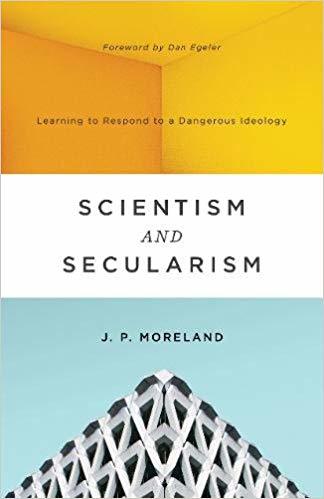 From a review of J. P. Moreland’s Scientism and Secularism: Learning to Respond to a Dangerous Ideology:
From a review of J. P. Moreland’s Scientism and Secularism: Learning to Respond to a Dangerous Ideology:
Insisting that science is the only way to know (strong scientism) is not something known scientifically (how can you scientifically prove that all knowledge must be scientifically provable?). And if science can’t inform us about the reality of ethics or free will or human dignity, so what? Science has built-in limitations, but some moderns have placed a burden on science that it cannot—and was never meant to—bear. Theology, philosophy, and other sources of knowledge not only help supplement what science can show, but they can also enrich our study of science.
Weak scientism fares no better. Why is this? Weak scientism appeals to authority (“Science”) rather than to actual arguments and evidence. Furthermore, science itself routinely depends on non-empirical laws of logic and on mathematical truths. Scientists must trust the reliability of their cognitive/rational faculties—a trust that is required even before science can get off the ground. As with strong scientism, weak scientism bears out the fact that “philosophy has a kind of primacy over science” (72).
We have all manner of non-scientific knowledge. The logical laws and mathematical truths required for science are necessary truths—as opposed to the contingent truths of science. And in order to study the material world, the non-material realm of consciousness (first-person, directly and privately accessible awareness) is required. And the reality of moral knowledge (e.g., the wrongness of torturing babies for fun) is basic to our proper thinking and function as human beings but doesn’t belong to the realm of science.Paul Copan, “Science Is No Enemy of Christianity” at The Gospel Coalition
See also: J.P. Moreland On Darwinism And “Reverse Intelligent Design”
J. P. Moreland: How scientism leads to post-modern relativism
and
J. P. Moreland on claims we know better than we know science truths
Follow UD News at Twitter!
Copyright © 2019 Uncommon Descent . This Feed is for personal non-commercial use only. If you are not reading this material in your news aggregator, the site you are looking at is guilty of copyright infringement UNLESS EXPLICIT PERMISSION OTHERWISE HAS BEEN GIVEN. Please contact legal@uncommondescent.com so we can take legal action immediately.Plugin by Taragana
Silicon Valley invents a religion suited to the culture

The most important characteristic of an AI cult is that its gods (Godbots?) will be created by the AI developers and not the other way around:
Levandowski may be an outlier but, we are told, he reflects a Silicon Valley mindset:
Nobody but Levandowski knows if he really believes he can create a Godbot. Considering his obsession with artificial intelligence, it is altogether possible that he does. And while that may seem nuts, people have started religions for stranger reasons. The Way of the Future could be an elaborate tax scam and this still would not necessarily invalidate its claims to be a religion; people sincerely believe in Scientology, after all. Further, Levandowski’s belief isn’t so strange within the context of Silicon Valley, which has long invested religious hopes in its creations. Sarah Jones, “Silicon Valley’s Religious Drive” at The New Republic
Dan Brown, the famous author of The DaVinci Code, thinks that an AI-based collective consciousness created by global connections will replace God: “Our need for that exterior god, that sits up there and judges us … will diminish and eventually disappear.”
At New Scientist, Sean O’Neil asked, “Could we become gods?” (2015) and cognitive roboticist Murray Shanahan replied, “There’s nothing magical about the brain; it doesn’t transcend physics. So, of course, it is possible to build a physical entity that can do anything we can do.” For the AI culture, that seems to mean yes, we can become godbots.
Commentator Tyler O’Neil sees an inherent contradiction in this drive for “creating a deity of artificial intelligence and then worshipping it.” But technocrat religion seems to aspire to control rather than worship or—at most—it worships entirely on its own terms. The Godbot can be developed or not; likewise, it can be worshipped or not, as the believer wishes… More. “Tales of an invented god” at Mind Matters
See also: AI as an emergent religion Science philosopher Mike Keas’s new book discusses how AI and ET are merging, to create a religion of futurist magic
The Idol with Feet of Silicon Robert J. Marks: Religions based on artificial intelligence (AI) cannot transcend the limits of computers
and
Can machines be persons? What would the real effect of legal personhood for machines be?
Follow UD News at Twitter!
Copyright © 2019 Uncommon Descent . This Feed is for personal non-commercial use only. If you are not reading this material in your news aggregator, the site you are looking at is guilty of copyright infringement UNLESS EXPLICIT PERMISSION OTHERWISE HAS BEEN GIVEN. Please contact legal@uncommondescent.com so we can take legal action immediately.
Plugin by Taragana
Scientific quest for morality ends in moral nihilism
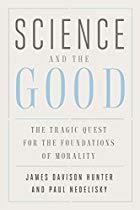
From a review of James Davison Hunter and Paul Nedelisky’s Science and the Good: The Tragic Quest for the Foundations of Morality,
Hunter and Nedelisky conclude that the overwhelming majority of the new science of morality contributes at level three—interesting, but nowhere close to providing a unifying foundation for morality, not to mention anything that approaches normative ethics. They conclude that the scientific quest ultimately ends up in moral nihilism, with morality being redefined essentially out of existence, replaced with subjective accounts of well-being or the admission that moral norms are arbitrary (191). They point out that the scientific quest continually overreaches, moving uncritically from the descriptive to the normative, then finally giving up the normative quest altogether.
The book is full of insightful commentary on the historical figures and the current evolutionary and neuroscientific bases for morality. The authors maintain that the neural or evolutionary basis for particular traits or virtues may be interesting but tell us nothing about whether they should be adopted or rejected (143). They’re insightful in their critique of contemporary “science of morality” advocates Michael Shermer and Sam Harris, in that they both make “assumptions about what is valuable, independent of science” (158). They also cite the shift of emphasis from morality being “a source of objective action-guidance” to “understanding morality socially (and psychologically) and prudentially” (183). They further point out that this quest for moral foundations has proceeded apart from any reflection on the dynamics of power and position (201–2). Scott B. Rae, “Morality Is Not Scientific” at The Gospel Coalition
One outcome of morality becoming an uninspiring talkshop is that massive breaches of ethics are more difficult to address except in terms of the commotion they create, as opposed to the truths they violate or the individuals they harm.
See also: Science-Based Morality: 400 Years Of Failure?
The Failed Search For An Evolutionary Morality
and
Yes, The New Science Of Morality Can Ground Moralities In Science— All Of Them, In Fact
Follow UD News at Twitter!
Copyright © 2019 Uncommon Descent . This Feed is for personal non-commercial use only. If you are not reading this material in your news aggregator, the site you are looking at is guilty of copyright infringement UNLESS EXPLICIT PERMISSION OTHERWISE HAS BEEN GIVEN. Please contact legal@uncommondescent.com so we can take legal action immediately.
Plugin by Taragana
Philosopher of science Mike Keas: Artificial intelligence (AI) as an emergent religion
Many Singulatarians hold that their soon-to-be-realized technology will be indistinguishable by the rest of us from magic. Are they serious? Well, in 2005, Kurzweil said that the magical Harry Potter stories “are not unreasonable visions of our world as it will exist only a few decades from now.” when, due to AI, “the entire universe will become saturated with our intelligence.” Keas warns that this type of thing encourages people “to expect the experiential equivalent of occult phenomena.”
More.
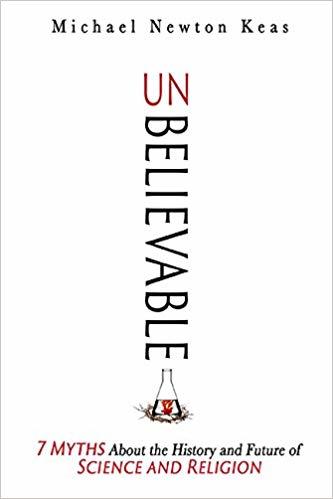
Mike Keas’s new book Unbelievable: 7 Myths About the History and Future of Science and Religion discusses how AI and ET are merging, to create a religion of futurist magic:
See also: Historian: Darwinists Kept The “Flat Earth” Myth Going, To Attack Opponents Of Their Views (Mike Keas)
Neil DeGrasse Tyson’s Cosmos And
“The Artistic License To Lie” (Mike Keas)
and
Bill Nye’s “Christianity Vs. The Big Universe” Myth (Mike Keas)
Follow UD News at Twitter!
Copyright © 2019 Uncommon Descent . This Feed is for personal non-commercial use only. If you are not reading this material in your news aggregator, the site you are looking at is guilty of copyright infringement UNLESS EXPLICIT PERMISSION OTHERWISE HAS BEEN GIVEN. Please contact legal@uncommondescent.com so we can take legal action immediately.
Plugin by Taragana
Simple demonstrations of how structure and quantity are embedded in the world
As there seems to be resistance to the point that the world embeds structure and quantity (thus, mathematical features) I think it is useful to provide some simple reminders.
The Egyptian rope trick and the 3-4-5 Pythagorean triplet, thus a right angle forced through a numerical relationship (and note the power of the number twelve again):
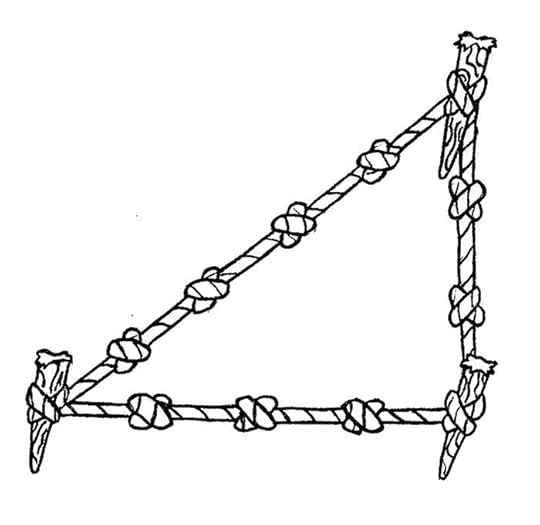
Lego bricks demonstrating the Pythagorean relationship — notice, number theory connexions and the natural interpretation of “squaring”:

Also, notice a Mobius strip cutting exercise:
In none of these cases is the result dependent on our creating a mathematical model or an axiomatisation. The results are objective, factual, embedded in the world and in fact helped to constrain how Mathematical systems were axiomatised. END
In none of these cases is the result dependent on our creating a mathematical model or an axiomatisation. The results are objective, factual, embedded in the world and in fact helped to constrain how Mathematical systems were axiomatised. END
PS: Dr Tokieda’s lecture on Mobius strips (with demonstrations):
Lecture series, here.
Copyright © 2019 Uncommon Descent . This Feed is for personal non-commercial use only. If you are not reading this material in your news aggregator, the site you are looking at is guilty of copyright infringement UNLESS EXPLICIT PERMISSION OTHERWISE HAS BEEN GIVEN. Please contact legal@uncommondescent.com so we can take legal action immediately.
Plugin by Taragana
February 2, 2019
Detailed bat and dolphin convergence in echolocation
Bats and dolphins were found to use independently develop echolocation using the same genes. And get this:
Joe Parker, also at Queen Mary, University of London, compared the bat genetic sequences to those from more than a dozen other mammals, including the bottlenose dolphin. He focused on the 2300 genes that exist in single copies in all the bats, the dolphin, and at least five other mammals. He evaluated how similar each gene was to its counterparts in various bats and the dolphin. The analysis revealed that 200 genes had independently changed in the same ways, Parker, Rossiter and their colleagues report today in Nature. Several of the genes are involved in hearing, but the others have no clear link to echolocation so far; some genes with shared changes are important for vision, but most have functions that are unknown.
And what about the effect of all this convergence on unquestionable assumptions about common descent?
No family trees are entirely safe from these misleading effects, Castoe says. “And we currently have no way to deal with this.” Elizabeth Pennisi, “Bats and Dolphins Evolved Echolocation in Same Way” at Science
… sound of whistling…
See also: Move over, mammals. Spiders provide milk for their young too.
and
Evolution appears to converge on goals—but in Darwinian terms, is that possible?
Follow UD News at Twitter!
Copyright © 2019 Uncommon Descent . This Feed is for personal non-commercial use only. If you are not reading this material in your news aggregator, the site you are looking at is guilty of copyright infringement UNLESS EXPLICIT PERMISSION OTHERWISE HAS BEEN GIVEN. Please contact legal@uncommondescent.com so we can take legal action immediately.
Plugin by Taragana
Brendan Dixon: The Numbers Don’t Speak for Themselves

Because Machine Learning is opaque—even experts cannot clearly explain how a system arrived at a conclusion—we treat it as magic. Therefore, we should until proven innocent (and correct)
Data analyst Kalev Leetaru—who has written several good pieces on AI at Forbes—also points out that machine learning is “about correlations, not causation.” The fact that two pieces of data may be linked does not mean that one causes the other but nonetheless,
“Developers and data scientists increasingly treat their creations as silicon lifeforms ‘learning’ concrete facts about the world, rather than what they truly are: piles of numbers detached from what they represent, mere statistical patterns encoded into software. We must recognize that those patterns are merely correlations amongst vast reams of data, rather than causative truths or natural laws governing our world. Kalev Leetaru, “A Reminder That Machine Learning Is About Correlations Not Causation” at Forbes “
At times, verification and study of these statistical patterns are useful. For example, machine learning is well-suited to assist us in the analysis of complex patterns, such as MRI results. Properly used, it could help save many lives. But when misapplied—for the sake of “efficiency”—to broad swathes of the people using data sets gathered for other purposes, sets that nearly always carry embedded biases, it damages many lives. More.
Brendan Dixon of the Biologic Institute is a Software Architect with experience designing, creating, and managing projects of all sizes. His first foray into Artificial Intelligence was in the 1980s when he built an Expert System to assist in the diagnosis of software problems at IBM. Though he’s spent the majority of his career on other types of software, he’s remained engaged and interested in the field.
Also by Brendan Dixon: Artificial Intelligence Is Actually Superficial Intelligence The confusing ways the word “intelligence” is used belie the differences between human intelligence and machine sophistication
AI Winter Is Coming: Roughly every decade since the late 1960s has experienced a promising wave of AI that later crashed on real-world problems, leading to collapses in research funding.
and
The “Superintelligent AI” Myth: The problem that even the skeptical Deep Learning researcher left out
Follow UD News at Twitter!
Copyright © 2019 Uncommon Descent . This Feed is for personal non-commercial use only. If you are not reading this material in your news aggregator, the site you are looking at is guilty of copyright infringement UNLESS EXPLICIT PERMISSION OTHERWISE HAS BEEN GIVEN. Please contact legal@uncommondescent.com so we can take legal action immediately.
Plugin by Taragana
Michael J. Behe's Blog
- Michael J. Behe's profile
- 219 followers



